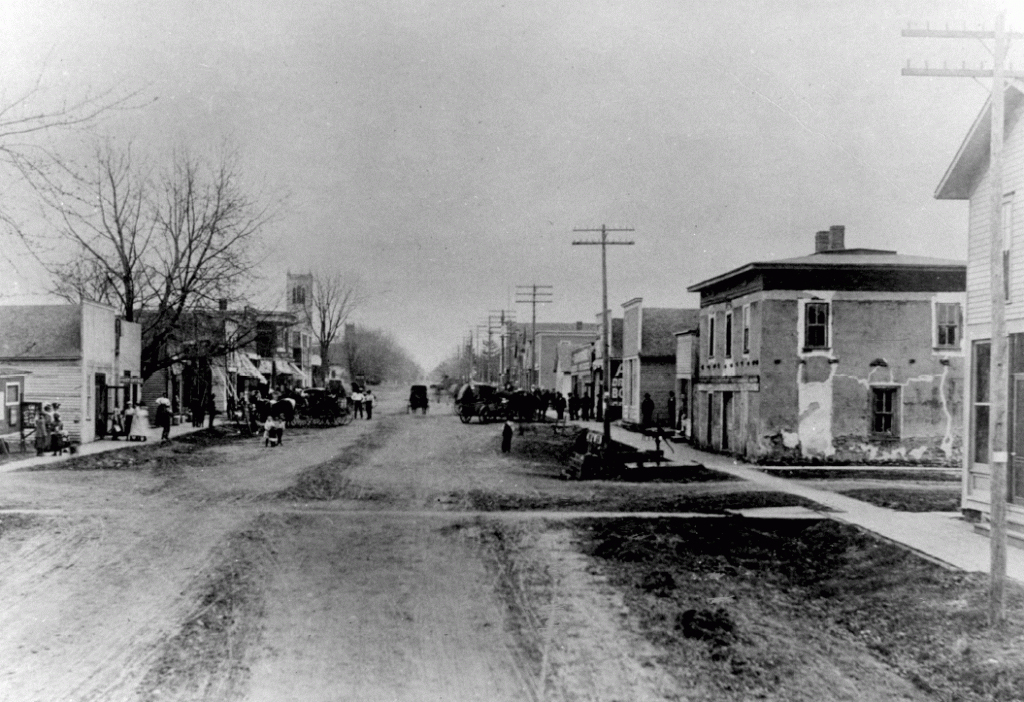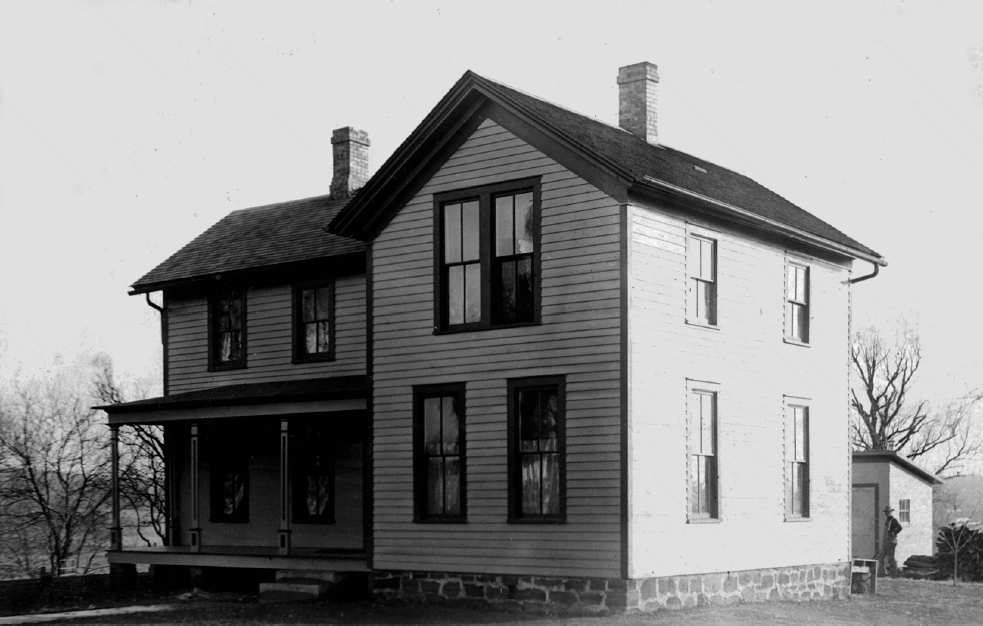
SRHS
Steamboat Rock Historical Society
Natural Resources
BUILDING STONE
Nearly every foundation, cellar, basement, cistern, and well curbing that was constructed in the area, including much of western Grundy county before 1915 was made of locally quarried stone. This stone
varies from dense buff-colored limestone to porous dark brown sandstone. Many of the foundations exhibit a skillful job of stone cutting.

One of three stone “grout type” buildings that once stood on Market Street in Steamboat Rock
Several houses and at least three business buildings in Steamboat Rock were of the “grout” type of construction. The stone in these buildings was laid with a minimum amount of cutting except at the corners and around the window and door openings. the irregular joints between the uncut stones were filled with rich lime mortar or “grout.” The 12 to 20 inch thick walls were then plastered on both sides. Heavy white oak lintels were used over the window and door openings.
One of these grout buildings was located at the present site of the old locker building. It was a two story building constructed by Sam Jansen and used at various times as a hardware store, harness and shoe shop, millinery store, candy kitchen and finally as the post office until it was burned out in the disastrous fire of 1926, at which time it served as a barrier that prevented the fire from moving farther west than it did.
Another two-story grout building, also built by Sam Jansen, stood on the corner where the Chevrolet Garage once stood. The third was another block to the west on the north side of the street. This building was known as the Reuben Wright Hotel and later as the Western House.
Most of the stone that was used came from the quarry south and west of Steamboat Rock. Here there were great deposits of building quality sandstone. The quarry was opened by Jonathan Dickenson, and later owned and worked by his son-inlaw Harry Grieves. Grieves, did a great deal of stone cutting for use in home foundations and fancy corners around bay windows.
Stone was hauled out by wagons, sometimes as many as 10 in a train. Neighbors hauled rock for each other. It was said that men came from a great distance for stone from the quarry. Hotel owner, A. S. Root, once told of men coming from more that a day away, and staying overnight, stabling their teams in the livery barn and often sleeping on the hay there.

Notice the stone foundation of this home of Henry (Ike) Cramer. The foundation of this house still standing on Main Street, is from the Steamboat quarry.
© 2020 Steamboat Rock Historical Society | All Rights Reserved
Powered by Hawth Productions, LLC